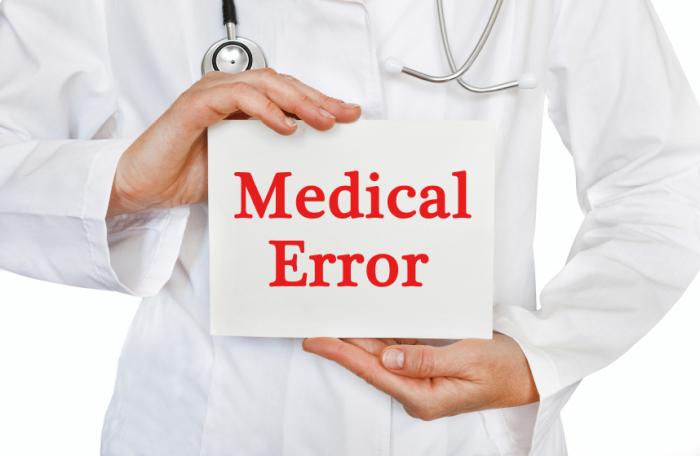Prescription medication errors can be considered medical malpractice when healthcare providers deviate from the accepted standard of care, causing harm. This includes incorrect dosages, wrong medications, or failing to account for drug interactions. To establish malpractice, it is necessary to show that a duty of care was owed, the duty was breached, and this breach directly resulted in injury. Demonstrating clear evidence of harm and causation is essential.
If your doctor neglects to follow established protocols or fails to communicate effectively, you might have a valid malpractice claim. Understanding these nuances can help you assess your situation and potential next steps. For guidance and legal assistance, consider consulting a personal injury lawyer.
Defining Prescription Medication Errors
What exactly constitutes a prescription medication error, and why is it so critical to identify and prevent these errors in medical practice?
A prescription medication error occurs when there’s a mistake in the prescribing, dispensing, or administration of a drug. This can involve incorrect dosages, wrong medications, or failure to account for drug interactions. Identifying and preventing these errors is essential because they can lead to serious health complications, prolonged hospital stays, or even death.
Clear and effective pharmacy communication is pivotal in minimizing these errors. When doctors, pharmacists, and patients exchange accurate information, the risk of mistakes diminishes significantly. For instance, a doctor must provide precise dosing instructions, and a pharmacist should verify the prescription’s accuracy. Additionally, patients should feel empowered to ask questions about their medications.
Moreover, understanding potential drug interactions is crucial. Some medications can interact negatively with others, leading to harmful side effects or reduced efficacy. By thoroughly reviewing a patient’s medication history, healthcare providers can prevent such dangerous interactions.
Therefore, robust communication and meticulous attention to drug interactions are key strategies in defining and preventing prescription medication errors, ultimately safeguarding patient health and ensuring effective treatment.
Common Types of Medication Errors
Understanding the common types of medication errors is essential to effectively addressing the risks they pose to patient safety. One frequent error involves incorrect dosages—either too much or too little of a medication. This can arise from miscommunication between healthcare providers or a simple miscalculation.
Another common issue is patient confusion, especially when multiple medications are prescribed. Patients might misunderstand dosage instructions or mix up medications, leading to harmful interactions.
Labeling issues also play a key role in medication errors. Often, labels can be unclear or misleading, making it difficult for patients to follow instructions correctly. This might include ambiguous wording, small font sizes, or similar packaging for different medications, which further increases the risk of mistakes.
Another type of error occurs when the wrong medication is prescribed entirely. This might result from a misdiagnosis or a clerical error, where a patient’s chart is mixed up with another’s.
Lastly, errors in the timing of medication administration can have serious consequences. Taking a medication too early or too late can diminish its effectiveness or exacerbate side effects.
Legal Definition of Medical Malpractice
To understand medical malpractice, you need to grasp the concepts of duty of care, breach of duty, causation, and harm.
When a healthcare provider fails to meet their duty of care, and this breach directly causes harm to a patient, it constitutes malpractice.
Each of these elements must be proven for a successful claim.
Duty of Care
Establishing a duty of care is the first essential step in proving medical malpractice in cases of prescription medication errors. As a patient, you trust that your doctor will act responsibly and prioritize your safety. This trust forms the foundation of the doctor-patient relationship, where your well-being takes precedence in every medical decision.
When you receive a prescription, your doctor has a clear responsibility to make sure it’s appropriate for your condition, taking into account your medical history, potential drug interactions, and correct dosages. This duty of care means that your doctor must exercise the same level of competence and diligence that any reasonable physician would under similar circumstances.
Understanding the duty of care is important because it establishes a legal obligation your doctor has towards you. If a prescription error leads to harm, demonstrating that your doctor had this responsibility is the first step in a medical malpractice case.
It’s not just about proving an error occurred; it’s about showing that the doctor had a duty to prevent it. By focusing on doctor responsibility and patient safety, you can clearly illustrate the breach in the standard of care required by law.
Breach of Duty
Proving a breach of duty in medical malpractice cases hinges on demonstrating that your doctor failed to meet the standard of care expected in prescribing your medication. This means showing that the physician didn’t fulfill their responsibility to act with the same level of skill and care that a reasonably competent doctor would in similar circumstances.
Medication errors can occur when your physician neglects vital steps in the prescribing process, such as verifying allergies, correct dosages, or potential drug interactions.
Physician responsibility mandates that your doctor thoroughly reviews your medical history and current medications. They should also stay updated on best practices to minimize risks. Error prevention is a critical part of their duty. For instance, they should utilize electronic prescribing systems to avoid handwriting errors and guarantee clarity. If your doctor fails to adhere to these established protocols and you suffer as a result, it constitutes a breach of duty.
In medical malpractice, it’s not enough to simply show an error occurred; you need to prove that the deviation from standard care directly led to the mistake. By establishing this breach, you lay the groundwork for your legal case, emphasizing the importance of physician responsibility and error prevention in safeguarding patient health.
Causation and Harm
Demonstrating causation and harm in a medical malpractice case means showing that the physician’s breach of duty directly resulted in your injury or worsening condition. It’s important to establish a clear link between the prescription error and the negative patient outcomes you experienced. This involves gathering thorough injury documentation, including medical records, expert testimony, and any other relevant evidence that illustrates the direct impact of the error on your health.
You must show that the medication error wasn’t just a minor mistake but a significant factor that caused harm. For instance, if a doctor prescribed the wrong dosage, you need to prove that this specific error led to a measurable decline in your condition. This is where detailed injury documentation becomes invaluable. Medical records should detail the initial condition, the error, and the resulting harm to paint a clear picture for the court.
Don’t forget, the burden of proof is on you. You need to persuasively argue that without the doctor’s mistake, your health wouldn’t have deteriorated. Clear, precise evidence can help make sure that the severity of the error and its impact on patient outcomes are unmistakably demonstrated.
Establishing Negligence in Medication Errors
To determine negligence in medication errors, one must meticulously examine the healthcare provider’s adherence to the standard of care expected in similar circumstances. Did the healthcare provider follow established protocols for prescribing and dispensing medication? Pharmacy errors often occur when these protocols aren’t observed, leading to potentially dangerous consequences.
It’s imperative to look at whether the healthcare provider correctly prescribed the medication, considering the patient’s medical history and current medications. Additionally, patient education plays a vital role in preventing medication errors. Did the healthcare provider adequately inform the patient about the medication’s purpose, dosage, and potential side effects? Failure to provide this information can result in improper use of the medication, which may be considered negligent.
For example, if a healthcare provider prescribed a medication without warning the patient about interactions with other drugs they’re taking, this oversight might constitute negligence. To establish negligence, gather detailed records of the prescription process, patient education efforts, and any communication between the healthcare provider and the patient.
Proving Harm and Causation
When you’re building a case for medication errors, dissecting the direct link between the healthcare provider’s negligence and the harm suffered by the patient is essential. To establish this connection, you’ll need compelling evidence that clearly demonstrates how the error directly caused the patient’s injury or worsened their condition.
Start by gathering patient testimony. Firsthand accounts from the patient can provide a vivid, detailed picture of the suffering endured and the immediate impact of the medication error. This testimony can offer invaluable insights into the sequence of events, the onset of symptoms, and the resultant health complications.
Next, enlist expert witnesses. These medical professionals can critically analyze the facts, offering their authoritative opinions on how the error deviated from accepted medical practices and led to harm. Their expert testimony can clarify complex medical details, making it easier for a judge or jury to understand the causation chain.
Standard of Care in Prescription Practices
You must guarantee prescription accuracy, follow proper dosage guidelines, and maintain thorough verification and documentation.
These practices aren’t just best practices—they’re essential to patient safety and legal protection.
Prescription Accuracy Importance
Ensuring prescription accuracy stands as a critical standard in medical practice, directly impacting patient safety and treatment efficacy. When you focus on accuracy standards and prescription precision, you’re safeguarding your patients from potential harm.
Even a minor error in a prescription can lead to severe consequences, including adverse drug reactions, ineffective treatment, or even fatal outcomes. Precision in prescribing medication isn’t just a guideline; it’s a responsibility that healthcare providers must uphold diligently.
You need to double-check every aspect of a prescription: the drug name, dosage form, strength, and administration instructions. Each detail must be meticulously verified against patient records to avoid any discrepancies.
Prescription accuracy isn’t just about avoiding mistakes; it’s about ensuring that the right medication reaches the right patient at the right time. Implementing electronic prescribing systems can also enhance accuracy by reducing the risk of human error.
Your commitment to prescription precision demonstrates a high standard of care, reinforcing trust between you and your patients. It’s an essential practice that underscores the importance of meticulous attention to detail in healthcare.
Proper Dosage Guidelines
Adhering to proper dosage guidelines is paramount in prescription practices, guaranteeing patients receive the precise amount of medication needed for peak therapeutic effect. You must understand that accurate dosage calculations are the cornerstone of effective treatment. Miscalculating a dosage can lead to under-treatment or, worse, severe adverse reactions. Hence, you need to follow administration guidelines meticulously.
When prescribing medication, you should always consider various factors like patient age, weight, renal function, and potential drug interactions. By doing so, you ensure that the medication’s efficacy is maximized while minimizing risks. Proper dosage calculations involve not just knowing the standard doses but adjusting them based on individual patient needs.
Clear administration guidelines are equally vital. They dictate the correct route, frequency, and timing of medication administration. By strictly adhering to these guidelines, you help prevent errors that could lead to serious health complications or even fatal outcomes. Your commitment to these practices signifies a high standard of care, safeguarding patient well-being and upholding professional integrity.
In the world of medical malpractice, deviation from these established guidelines can be grounds for liability, underlining the necessity for precision and vigilance in every prescription you write.
Verification and Documentation
In the domain of prescription practices, meticulous verification and thorough documentation serve as the bedrock of the standard of care, ensuring every patient’s safety and treatment efficacy. You must follow stringent record keeping protocols to prevent errors that could jeopardize patient health.
Each prescription should be cross-checked for accuracy, including the correct medication, dosage, and administration instructions. This verification process isn’t just a formality; it’s a critical step to catch potential errors before they reach the patient.
Documentation goes beyond merely jotting down details; it involves recording every relevant piece of information in a clear, accessible manner. Proper documentation should encompass patient consent, which confirms that the patient understands the treatment plan and any potential risks involved.
This consent must be documented meticulously to protect both the patient and the healthcare provider in case of disputes.
Legal Recourse for Affected Patients
When you or a loved one suffer from a prescription medication error, understanding your legal rights becomes essential for seeking justice and compensation.
First, you’ll need to determine if the error constitutes medical malpractice. This involves proving that the healthcare provider breached the standard of care, directly causing harm.
Patient compensation can cover various damages, including medical expenses, lost wages, and pain and suffering. To pursue this, you’ll need to navigate the legal process. Start by consulting a medical malpractice attorney who specializes in prescription errors. They can evaluate your case, gather evidence, and identify expert witnesses to support your claims.
Filing a lawsuit involves several steps: submitting a complaint, discovery, and potentially going to trial. Your lawyer will help you draft a compelling complaint that outlines the specifics of the error and the resulting damages. During discovery, both sides exchange information and depose witnesses, which is vital for building a strong case.
If your case goes to trial, your attorney will advocate for you, presenting evidence and arguments to demonstrate that the error caused significant harm.
While the legal process can be challenging, thorough preparation and expert guidance maximize your chances of obtaining fair compensation.
Frequently Asked Questions
How Can Patients Prevent Prescription Medication Errors?
To prevent prescription medication errors, always engage in a pharmacy consultation and verify medication reconciliation with your healthcare provider. Ask questions, double-check dosages, and maintain an updated medication list to safeguard your health.
What Should I Do if I Suspect a Medication Error?
If you suspect a medication error, immediately start documenting symptoms and consult an attorney. Acting swiftly can protect your health and legal rights, ensuring that any potential malpractice is addressed appropriately and efficiently.
Are There Specific Medications More Prone to Prescription Errors?
Yes, you should be aware that high risk medications, like anticoagulants and insulin, are more prone to prescription errors due to dosage variations. Double-checking prescriptions and understanding dosages can greatly reduce these risks.
Can Technology Help Reduce Prescription Medication Errors?
You can greatly reduce prescription medication errors with electronic prescriptions and automated dispensing systems. These technologies guarantee accuracy, eliminate handwriting issues, and streamline processes, making them essential tools for enhancing patient safety and care quality.
How Do I Report a Prescription Medication Error?
To report a prescription medication error, use the available reporting channels like your pharmacy or healthcare provider. Document everything precisely—dates, dosages, and symptoms. Accurate documentation tips will guarantee your report is taken seriously and promptly addressed.
Conclusion
When you experience a prescription medication error, it can quickly escalate to medical malpractice if negligence is involved. You must understand that proving harm and causation is essential.
By establishing a breach in the standard of care, you can hold the responsible parties accountable. Don’t hesitate to seek legal recourse to guarantee your rights are protected and to prevent future errors.
Your health and safety are paramount—take action to safeguard them.





Be First to Comment